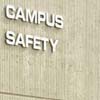Governor Approves New Public Safety Laws Affecting Cities, Schools and Other Public Agencies

November 2018
Number 81
In September 2018, Governor Jerry Brown signed three new bills addressing public agency response to disasters and emergencies including school violence.
Senate Bill (SB) 833: Emergency Alerts
In response to the unprecedented 2017 wildland fire disasters, SB 833 aims to improve California's emergency alert system by requiring the Office of Emergency Services (OES) to develop guidelines for alerting and warning the public of an emergency. At a minimum, the Guidelines must include:
The Guidelines must be developed in consultation with telecommunications carriers, the cable and broadband industry, radio and television broadcasters, the California State Association of Counties, the League of California Cities, the disability community, appropriate federal agencies, and the Standardized Emergency Management System Alert and Warning Specialist Committee. They must be completed by July 1, 2019, and then provided to all cities and counties in the state. Six months after the Guidelines are distributed, OES must develop training that includes:
Further, to incentivize compliance with the Guidelines, SB 833 authorizes OES to condition certain grant funding on the grantee implementing an alert and warning system consistent with the Guidelines.
While the catalyst for the bill was the 2017 fire season, the Guidelines will likely have application to other natural and manmade disasters and emergencies, including terrorist threats/attacks, active shooters, etc. In addition, the bill and Guidelines are directly intended for "designated alerting authorities" (DAAs), which are agencies and entities that apply and are approved to use the WEA system. Presently, the list of approved DAAs includes cities, counties and other local or regional emergency assistance agencies, but not schools. Nevertheless, the Guidelines will likely be quite instructive for all public agencies, including schools and colleges, in crafting alert systems and strategies, whether wireless or Cloud-based.
Assembly Bill (AB) 1747: School Safety Planning
All public schools are required to annual develop a comprehensive school safety plan in coordination with specified groups and including specific information. This bill adds the following new requirements:
Finally, this bill now obligates charter schools to annually create and update a comprehensive school safety plan.
These changes are largely the result of the growing recognition that greater communication and coordination is needed between local, regional, state and federal agencies to adequately plan for and respond to incidents of school violence.
AB 3205: School Door Locks
For new construction, the law already requires (with some exceptions) school districts to install locks that allow doors to classrooms, and rooms with an occupancy of five or more persons, to be locked from the inside as a condition of receiving certain state funding. AB 3205 extends this requirement to modernization project for which the district seeks state funds if:
For more information on these bills or to discuss any other school safety requirements, please contact the authors of this Client News Brief or an attorney at one of our eight offices located statewide. You can also visit our website, follow us on Facebook or Twitter or download our Client News Brief App.
Number 81
In September 2018, Governor Jerry Brown signed three new bills addressing public agency response to disasters and emergencies including school violence.
Senate Bill (SB) 833: Emergency Alerts
In response to the unprecedented 2017 wildland fire disasters, SB 833 aims to improve California's emergency alert system by requiring the Office of Emergency Services (OES) to develop guidelines for alerting and warning the public of an emergency. At a minimum, the Guidelines must include:
- Timelines for sending alerts during an emergency;
- Practices for sending advance warnings of an impending threat;
- Practices for testing, training on, and exercising a city's or county's (or joint) alert and warning system;
- Consideration for coordinating alerts with neighboring jurisdictions;
- Guidelines and protocols for redundancy and utilizing multiple forms of alerts;
- Guidelines and protocols for chain of command communications and accounting for staffing patterns to ensure a trained operator is always on call;
- Practices for effective notifications to the access and functional needs population;
- Message templates; and
- Common terminology.
The Guidelines must be developed in consultation with telecommunications carriers, the cable and broadband industry, radio and television broadcasters, the California State Association of Counties, the League of California Cities, the disability community, appropriate federal agencies, and the Standardized Emergency Management System Alert and Warning Specialist Committee. They must be completed by July 1, 2019, and then provided to all cities and counties in the state. Six months after the Guidelines are distributed, OES must develop training that includes:
- Information regarding the evaluation, purchase, and operation of the Wireless Emergency Alert (WEA) and the Federal Emergency Alert System (EAS) equipment and software;
- The technical capabilities of the WEA and EAS function within an alert system; and
- The content of the Guidelines.
Further, to incentivize compliance with the Guidelines, SB 833 authorizes OES to condition certain grant funding on the grantee implementing an alert and warning system consistent with the Guidelines.
While the catalyst for the bill was the 2017 fire season, the Guidelines will likely have application to other natural and manmade disasters and emergencies, including terrorist threats/attacks, active shooters, etc. In addition, the bill and Guidelines are directly intended for "designated alerting authorities" (DAAs), which are agencies and entities that apply and are approved to use the WEA system. Presently, the list of approved DAAs includes cities, counties and other local or regional emergency assistance agencies, but not schools. Nevertheless, the Guidelines will likely be quite instructive for all public agencies, including schools and colleges, in crafting alert systems and strategies, whether wireless or Cloud-based.
Assembly Bill (AB) 1747: School Safety Planning
All public schools are required to annual develop a comprehensive school safety plan in coordination with specified groups and including specific information. This bill adds the following new requirements:
- All school staff must be trained on the safety plan. No specific direction is included as to what this training should include or how it should be provided, e.g., in person or on-line.
- The school must now consult with fire officials and other first responders in the writing and development of the plan. Prior law only specifically required consultation with local law enforcement.
- The District or school now has an obligation to share the plan with law enforcement, fire officials and other first responders.
- The plan must include procedures for conducting tactical responses to criminal incidents.
- The California Department of Education (CDE) must provide general direction to school districts and COEs on what to include in a building disaster plan.
- CDE must develop and post on its website best practices for reviewing and approving school safety plans.
- CDE must maintain, update as necessary, and post on its website a compliance checklist for developing school safety plans.
Finally, this bill now obligates charter schools to annually create and update a comprehensive school safety plan.
These changes are largely the result of the growing recognition that greater communication and coordination is needed between local, regional, state and federal agencies to adequately plan for and respond to incidents of school violence.
AB 3205: School Door Locks
For new construction, the law already requires (with some exceptions) school districts to install locks that allow doors to classrooms, and rooms with an occupancy of five or more persons, to be locked from the inside as a condition of receiving certain state funding. AB 3205 extends this requirement to modernization project for which the district seeks state funds if:
- The project consists of the modernization of a facility constructed before January 1, 2012;
- The application for funding is submitted on or after January 1, 2019; and
- The project is submitted to the Division of the State Architect for approval on or after January 1, 2019.
For more information on these bills or to discuss any other school safety requirements, please contact the authors of this Client News Brief or an attorney at one of our eight offices located statewide. You can also visit our website, follow us on Facebook or Twitter or download our Client News Brief App.
As the information contained herein is necessarily general, its application to a particular set of facts and circumstances may vary. For this reason, this News Brief does not constitute legal advice. We recommend that you consult with your counsel prior to acting on the information contained herein.







